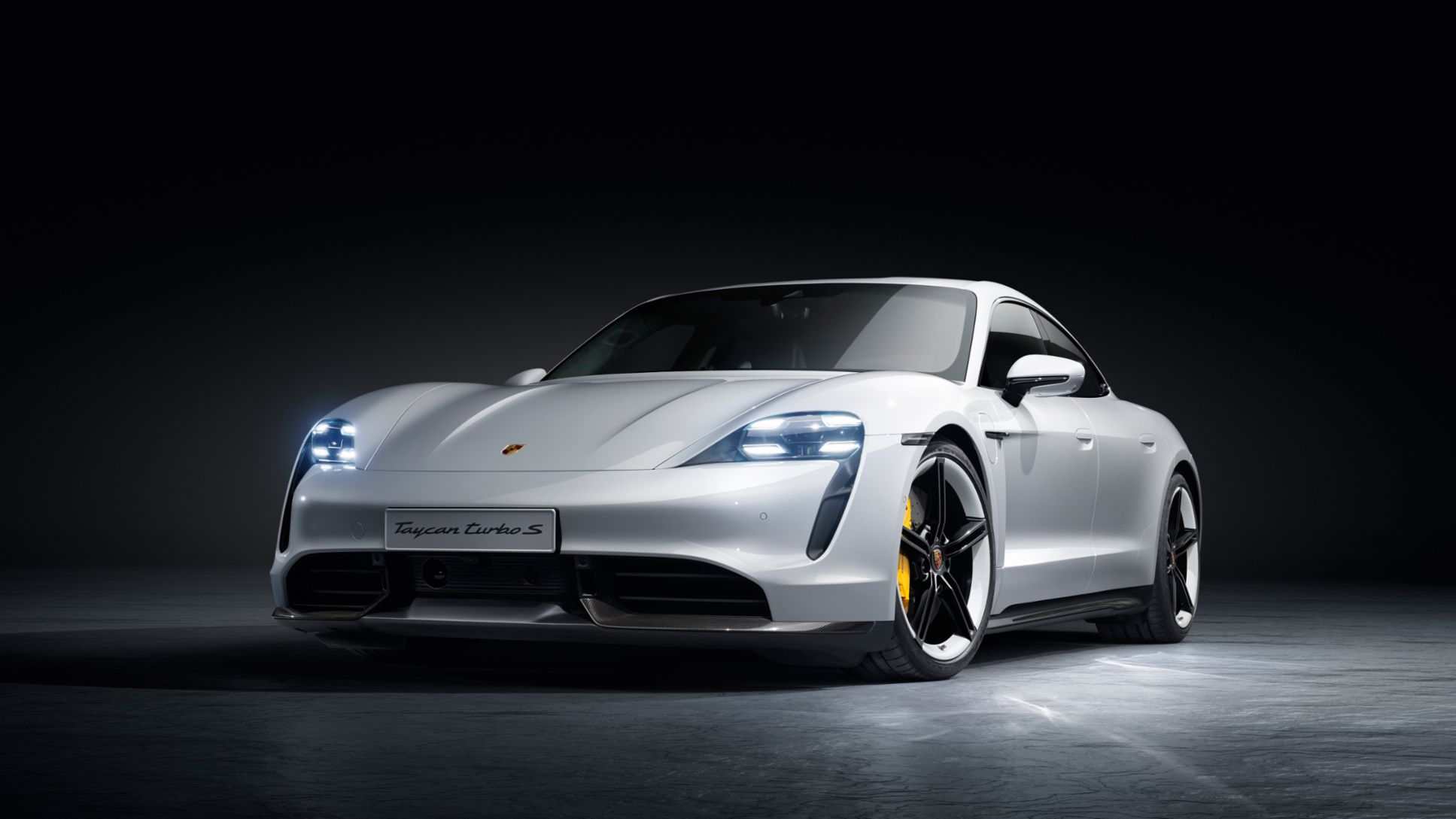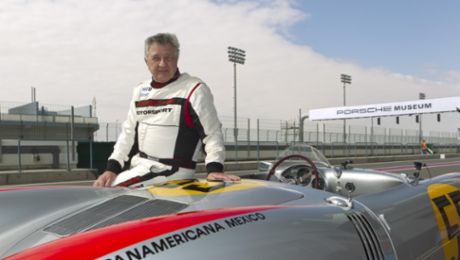However, the focus at the IAA will be on the brand’s first all-electric sports car: the Taycan as Turbo and Turbo S. “The Taycan redefines Porsche,” says Oliver Blume, Chairman of the Executive Board of Porsche AG: “Our goal was to herald the era of electromobility for Porsche with the sportiest, most innovative and most emotionally charged vehicle. The Taycan embodies all our values. The experience from more than 70 years of manufacturing sports cars.”
Sports car, sustainably redesigned: the Taycan
The first all-electric sports car, the Taycan, marks the beginning of a new era for Porsche as the company systematically expands its product range in the field of e-mobility. The four-door sports saloon is a unique package offering typical Porsche performance, connectivity and comprehensive everyday usability. At the same time, highly advanced production methods and the production features of the Taycan are setting new standards in the fields of sustainability and digitalisation. The first models in the new series are the Taycan Turbo S and Taycan Turbo. They are at the cutting edge of Porsche E-Performance and are among the most powerful production models that the sports car manufacturer currently has in its product range.
Even more plug-in hybrids: new Cayenne and Cayenne Coupé models
Porsche is extending the hybrid range of the Cayenne with no fewer than three new models. In the Cayenne Coupé E-Hybrid, the combination of a 3.0-litre V6 engine and electric machine generates a total output of 340 kW (462 PS; Cayenne E-Hybrid Coupé: Fuel consumption combined 3.2 – 3.1 l/100 km; CO2 emissions 75 – 72 g/km; electricity consumption (combined) 18.7 – 17.7 kWh/100 km). The vehicle has a fully electric range of up to 43 kilometres with zero local emissions.
The Cayenne Turbo S E-Hybrid is also new. The most powerful member of the Cayenne range with 500 kW (680 PS; Cayenne Turbo S E-Hybrid: Fuel consumption combined 3.9 – 3.7 l/100 km; CO2 emissions 90 – 85 g/km; electricity consumption (combined) 19.6 – 18.7 kWh/100 km; Cayenne Turbo S E-Hybrid Coupé: Fuel consumption combined 3.9 – 3.7 l/100 km; CO2 emissions 90 – 85 g/km; electricity consumption (combined) 19.6 – 18.7 kWh/100 km) is available as a Cayenne and Cayenne Coupé. It is powered by a 4.0-litre V8 engine in combination with an electric motor. The purely electric range of the Turbo S E-Hybrid is up to 40 kilometres.
Flagship model with more power and lower fuel consumption: the Macan Turbo
The new Porsche Macan Turbo claims the top spot in the category for sports cars in compact SUV format. The new six-cylinder biturbo engine delivers 324 kW (440 PS; Macan Turbo: Fuel consumption combined 9.8 l/100 km; CO2 emissions 224 g/km). This represents ten percent more power output than its predecessor from 20 percent less displacement. The standard high-performance brakes are equally impressive when it comes to deceleration: the Macan Turbo is braked by the exclusive Porsche Surface Coated Brakes (PSCB).
New addition to the 911 family: the 911 Carrera
The 911 Carrera extends the model range of the eighth generation. It will be launched as Coupé and Cabriolet with both rear-wheel and all-wheel drive. The new 911 Carrera generates 283 kW (385 PS; 911 Carrera: Fuel consumption combined 9.0 l/100 km; CO2 emissions 206 g/km; 911 Carrera Cabriolet: Fuel consumption combined 9.2 l/100 km; CO2 emissions 210 g/km) from its 3.0-litre, six-cylinder boxer engine with bi-turbocharging.
Return to formula racing: the Porsche 99X Electric
After more than 30 years, Porsche is returning to formula racing. With the Porsche 99X Electric, the company is establishing a further milestone on its path to works entry in the ABB FIA Formula E Championship 2019/2020. The entry into Formula E and the associated reorganisation of motorsport participation is derived from the Porsche Strategy 2025. In addition to purist GT road sports cars, all-electric sports cars also have a fixed place in this strategy. Both will form part of the Porsche motorsport world in the future. Presence and success in motorsport with electrically powered race cars is an important part of the company’s “Mission E” strategy. The Porsche 99X Electric will also serve as a development platform for future all-electric series production cars. The 800-volt technology used in Formula E, for example, is also used in the first all-electric production sports car from Porsche, the Taycan.
12-day continuous programme on the Porsche brand at the company stand
Experts from individual technical departments at Porsche will present a stage programme on the Porsche brand throughout the entire duration of the motor show and will provide an insight into current topics in the company for the first time. As might be expected, the new Porsche Taycan will play a central part in the lectures, interviews and discussions. Employees from the Development, Design and Marketing departments will explain in detail the features of the first all-electric Porsche. Other main content areas include the topics of motorsport and Formula E, visionary future technologies as well as gaming and Esports racing.

